Heads You Die, Tails I Live
By Karl H. Purnell
Karl Purnell, Mifflinburg, Pa., began his writing career as a reporter for the Harrisburg Patriot. He served in the Penna. Legislature from Union County in 1962-66 and then spent the years, 1967-68 as a war correspondent in Vietnam. He holds a degree in English Literature from Harvard and is the author of several books while his Vietnam comedy, Winning Hearts, played at the Wilton, Ct. Playhouse in 1983. He teaches an online course on the Vietnam War and other topics at Teachtheworldonline.com
There was one ticket available to the press that fateful afternoon of March 6, 1968 on a plane flying into the besieged Marine base of Khe Sahn , and I felt it should be mine.
Bob Ellison, a well-known combat photographer known for getting close-up shots during fire-fights, thought it should be his.
There was only one solution: flip a coin.
The Tet Offensive in Vietnam was still being fought in many areas of the country, particularly in Khe Sahn, a Marine outpost along the Demilitarized Zone where huge numbers of North Vietnamese regulars had surrounded and threatened to overrun this remote firebase .
I had just received an assignment from True Magazine, an American publication which liked combat stories written by reporters who were part of the action, to write an article about Khe Sahn and the strange new role of U.S. Marines hunkered down in trenches and foxholes instead of attacking or “hitting the beach” in an offensive operation.
I was also told that the well-known combat photographer, Bob Ellison would do the photography.
We met at the Danang Airbase early in the afternoon and I immediately told the 23-year-old Ellison that I should get the one ticket to Khe Sahn since writing the story was more complicated and took more time than photographing.
Ellison explained that it was the other way around and he should go in first.
It was a classic confrontation among the Vietnam press corps. Both groups tended to disparage the skill and courage needed by the other. I had spent the year 1967 as a reporter in Vietnam covering combat situations and now was feeling like a seasoned war correspondent who should be treated with respect.
Writers often felt superior to photographers in Vietnam. We felt that we had to be literate and capable of assessing and putting together complex situations in comprehensible language while the people taking photos need only point and click their cameras. This was not really true and generally writers knew very well it took a particular kind of skill and courage to get close to the action and photograph the truly important moments.
On the other hand, the photojournalists claimed, that the writers often stayed away from the action and based their stories by “debriefing” their subjects who had been under fire. There was undoubtedly some truth to that and certainly there were a number of “Saigon reporters” who rarely left the safety of the city although they filed combat stories gleaned from those who were involved.
This was Khe Sahn, however, probably the most dangerous place in Vietnam at that point. We both knew that it was under regular artillery barrage from bases in North Vietnam, just a few miles to the north. We also knew that it could be overrun by North Vietnamese regulars at any time. If we were there when they hit, it would be a huge opportunity for a magazine cover story.
“There’s only one solution,” Ellison said.
“What’s that?” I asked.
“We’ll flip a coin for the ticket.”
Reluctantly, I agreed and produced an American quarter which was change from something I bought at the Danang airbase cafeteria that morning.
“Call it,” I said.
“Heads,” Ellison replied.
Heads came up. Ellison won the ticket.
“Dammit” I muttered. Now it might take me days to get a ride into Khe Sahn and in the meantime. I would have to sit in the press quarters with nothing to do but read and wait for an available plane.
“Okay, I’ll get the next flight possible and will get in touch with you when I get there,” I said.
“I’m looking for a photographer named Bob Ellison.”
Satisfied that the right person had won the toss, Ellison disappeared toward the tarmac where a line of Marines were also boarding the cargo plane for the twenty minute flight to Khe Sahn.
Imagining that I was missing out on a big battle with lots of combat stories to report, I barely slept that night.
In the morning, I reported to the Press Office and was told that a plane would be going into Khe Sahn at 10:30 a.m. and there was a press ticket available.
I gathered my gear and in a few hours, I could see the flat brown landing field at Khe Sahn as the plane descended toward the beleaguered base.
After landing, I quickly checked at the press office in the middle of the base. “I’m looking for a photographer named Bob Ellison,” I announced to a sergeant sitting behind a small desk.
He looked over a manifest of press people at the base and shook his head. “No one here by that name.”
“He came in on a flight from Danang last evening,” I said.
The sergeant looked up. “That flight was shot down coming in over the valley. Forty guys on board.” he said.
I stepped back and tried to assess what had happened. “No survivors?” I asked.
“Nope. Everyone killed.”
I shook my head and started to leave. Then I turned back to the Sergeant: “Thanks, I said. I’ll be here for a few days.”
I signed in on the manifest and then headed off to interview some Marines who were digging a trench.
Now, almost fifty years later, I still wonder why I lost the toss for that fatal ticket to Khe Sahn with its unspoken Faustian bargain: Heads you die, tails I live.”

